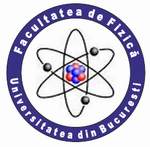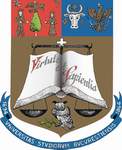| |
 |
UNIVERSITY OF BUCHAREST
FACULTY OF PHYSICS Guest
2025-10-05 22:20 |
 |
|
|
|
Conference: Bucharest University Faculty of Physics 2025 Meeting
Section: Theoretical and Computational Physics, High-Energy Physics, Applied Mathematics
Title:
A Deep Learning Model for Nuclear Mass Classification of Primary Cosmic Ray Induced Air Showers based on Observable Parameters
Authors:
Cosmina Mihoreanu1, Tudor Alexandru Calafeteanu1, Paula Gina Isar2, and Emil Ioan Slusanschi1
Affiliation:
1Faculty of Automatic Control and Computer Science, National University of Science and Technology Politehnica Bucharest, Bucharest, Romania
2Institute of Space Science - Subsidiary of INFLPR, Magurele, Ilfov, Romania
E-mail
cosmina.mihoreanu@stud.acs.upb.ro, tudor.calafeteanu@upb.ro, gina.isar@spacescience.ro, emil.slusanschi@upb.ro
Keywords:
convolutional network, machine learning, cosmic rays, radio imaging
Abstract:
Ultra-high-energy cosmic rays are still some of the most mysterious phenomena in astroparticle physics. Boasting energy levels of above 1 EeV (10^18 eV), far higher than other particles traveling the Universe, or energies reached in the laboratory, they incite significant unanswered questions concerning their actual origin and nature. Highly energetic cosmic particles are a window into the study of fundamental physics at its limits and beyond. The most comprehensive method of studying them is by observing their signatures resulted from the atmospheric interactions in the developing extensive air shower (EAS). An EAS consists of secondary elementary particles produced in a cascade reaction from a primary cosmic ray particle entering the Earth’s atmosphere. It can be traced on the ground using the powerful grid of radio detectors of the upgraded Pierre Auger Observatory (AugerPrime). The radio footprint of cosmic ray induced air shower events is fed to a ResNet based convolutional network, alongside geometric characteristics extracted from CORSIKA 7 (with the CoREAS option) simulated air showers. Thus, a modified ResNet18 deep learning model is trained to classify the nuclear mass of the primary cosmic ray particle based on the observable parameters, with performances assessed by standard metrics such as Accuracy, F1 Score and MCC Score, which are shown to fluctuate, as expected, with the number and types of primary particles represented in the dataset, and the features included in the analysis, indicating the depth of the shower’s maximum aperture (Xmax) as the most valuable for the classification task, and the radio footprint image as a good replacement for the numerical simulation data. Accuracies of up to 82% are reached for groups of particles with larger nuclear mass differences, such as protons, nitrogen and iron nuclei, while introducing the helium nucleus drops this metric to about 60%.
|
|
|
|